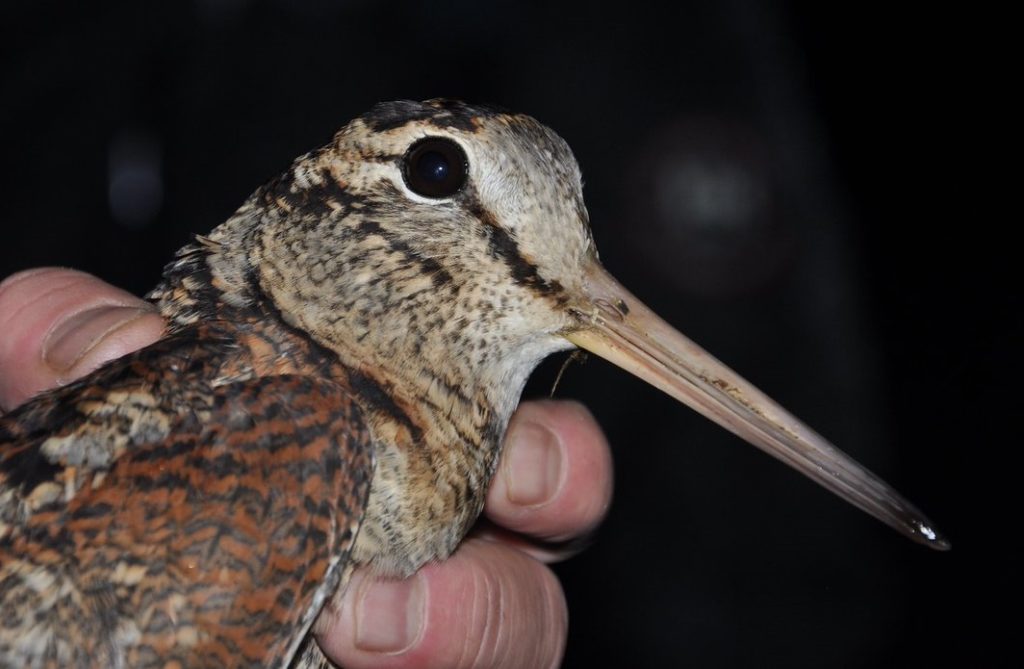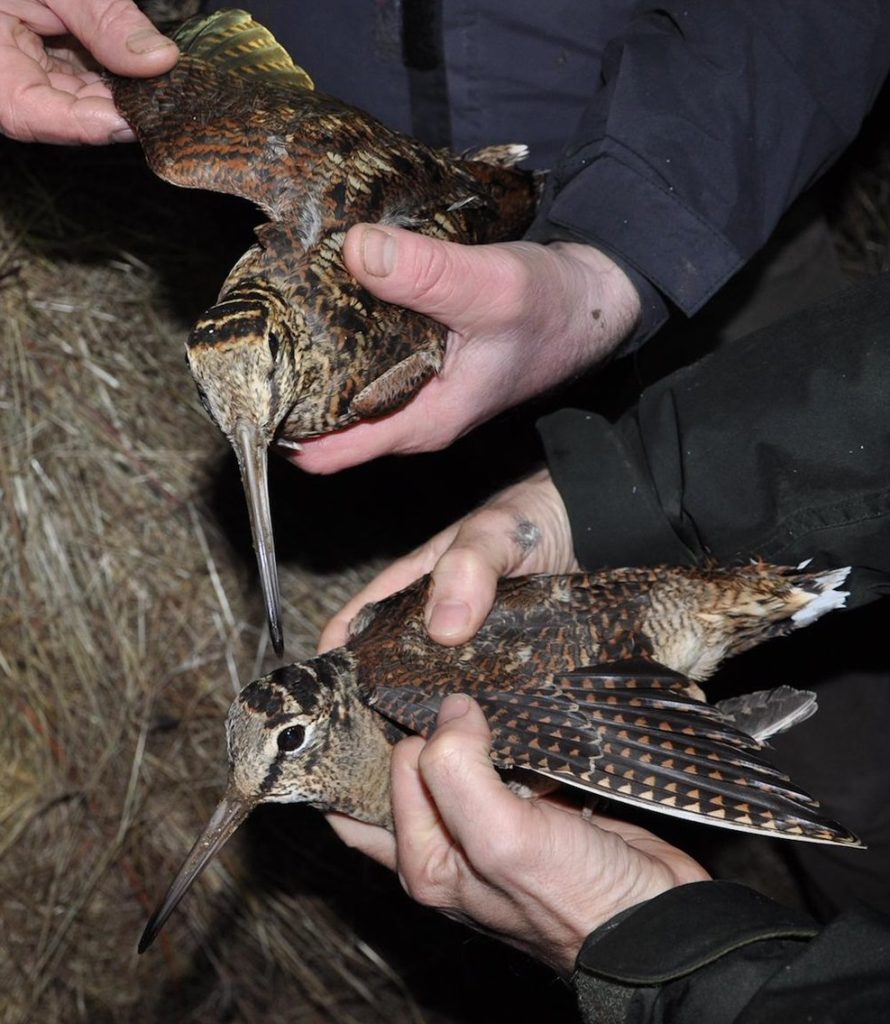A great piece of recent news was the securing of a Gower Society Grant for a fifth consecutive year. This will substantially cover our ringing costs at Oxwich over the next twelve months, and help us to maintain our levels of activity.
Recently, however, the weather has been difficult at best. We have squeezed in a short, last minute weekday session at our new site, Pwll Du, but have otherwise been limited to a night of dazzling at Whiteford NNR and later at Blackhills, Upper Killay.
The mixture of species captured has been relatively eclectic:
|
Species Name
|
Ringed
|
Retrapped
|
Total
|
|
Blue Tit
|
13
|
1
|
14
|
|
Bullfinch
|
3
|
1
|
4
|
|
Coal Tit
|
3
|
|
3
|
|
Dunnock
|
5
|
1
|
6
|
|
Goldfinch
|
1
|
|
1
|
|
Great Tit
|
14
|
4
|
18
|
|
House Sparrow
|
1
|
1
|
2
|
|
Jack Snipe
|
4
|
|
4
|
|
Jackdaw
|
1
|
|
1
|
|
Nuthatch
|
2
|
|
2
|
|
Pied/White Wagtail
|
1
|
|
1
|
|
Robin
|
2
|
|
2
|
|
Woodcock
|
7
|
|
7
|
|
Grand Total
|
57
|
8
|
65
|
Our session at Pwll Du resulted in a few species that we capture infrequently in the peninsula part of the recording area, including nuthatch and house sparrow. Two of the latter surprisingly included a recapture of a female ringed a few days previously (as it is challenging to capture the same sparrow twice). Most notable, however, was a jackdaw. We aged it as an adult based on iris and tail feather characteristics; comments are welcome.
On 9 March with Tony Cross in tow, we walked down to Berges Island, Whiteford at high tide to try some dazzling. A lack of birds, the first time we have ever experienced it at the site, made the lengthy round trip in the dark, wind and rain all the more joyous! Not to be deterred, however, we moved on to Blackhills, Upper Killay. The end of night tally of four jack snipe, a pied wagtail and seven woodcock more than made up for the early failure, albeit it also made for a very late finish.
It was really beneficial to get some in-hand tuition on ageing woodcock from Tony. The main features relied upon for separating adults from first winter birds were ginger fringing to the primary coverts (that contrasted with other areas of deeper brown in the wing feathers) and blunt / s-shaped edges to the inner primaries. First winters showed no contrast between the primary covert fringes and the brown of other flight feathers, and more rounded inner primary tips.
The pied wagtail was unusual, in that it was roosting alone in rushy pasture. It was a first winter male with one old greater covert. We released it onto a beam in a nearby low shed adjacent to a large open shutter; a far drier place to overnight
Thanks are due to the Gower Society for their continued support.
Thanks are also due to Tony Cross for leading the dazzling sessions and providing lots of good advice, to Keith Vaughton for leading the Pwll Du session, and to Val Wilson, Joanne Conway, Sarah Davies, Alex McCubbin, Richard Dann, Amy Schwartz, Dionne Jenkins, Kathryn Dunnett, Colin Baker, Claudia Allen and Andrew Roberts for company and assistance.
Owain Gabb
11/03/2019
 |
| Woodcock (Richard Dann) |
 |
| Woodcock (Richard Dann) |
 |
| Woodcock (Dionne Jenkins). The lower bird shows an obvious gingery contrast to the edges of the primary coverts |
 |
| Male house sparrow (Owain Gabb) |
 |
| Goldfinch (Richard Dann) |
 |
| Jackdaw (Richard Dann) |
 |
| Nuthatch (Richard Dann) |